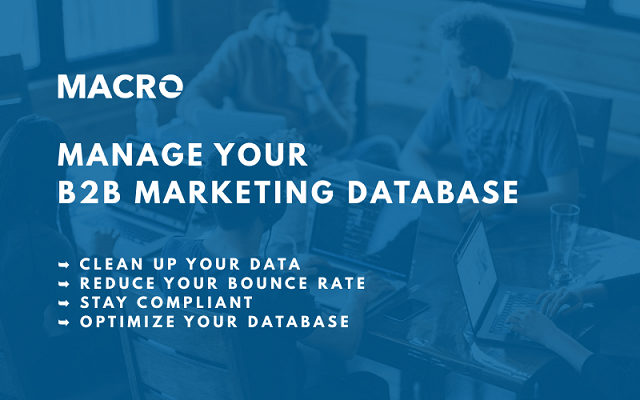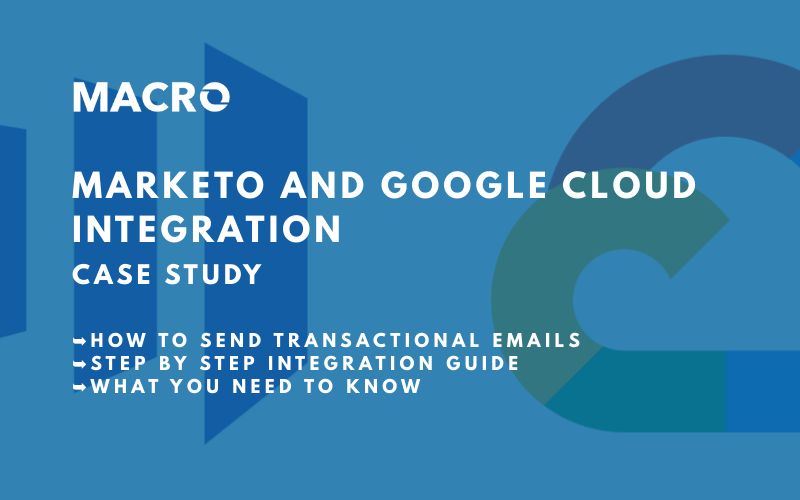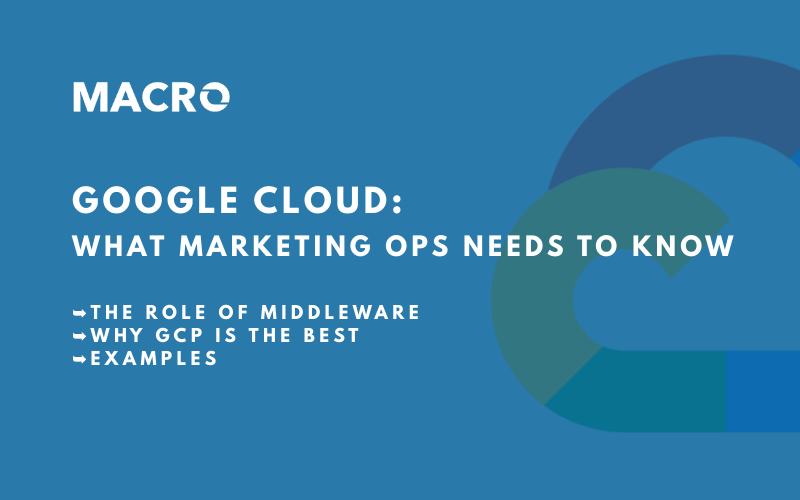
Database management is often overlooked, but it shouldn’t be - because good, clean data is the secret of the successful modern marketer. Like a vehicle, it needs to be regularly maintained, fine tuned and cleaned to keep it at optimal performance.
A clean marketing database allows you to better segment your audience, stay compliant and gain accurate insights to make better data-driven decisions. It can make the difference between a successful targeted campaign and mediocre marketing performance. Here are a few tips and examples to help you maintain and manage your marketing database:
The quality of your database records have a direct impact on your overall marketing technology expenses. The cost of your marketing automation platform, most of the time, depends on the number of records in your database. Keeping bad data bloats your system and your bill. Deleting the records you don’t need leads to lower costs when your contract needs to be renewed.
You can save money with the following best practices:
CRM data which shouldn’t be used for marketing purposes , needs to be out of your marketing database. In most marketing automation platforms, you have the ability to customize your synchronization to avoid records spilling over. Macro’s experts help many companies do this to keep costs under control.
Many spam bots sneak in from forms. The emails usually have a similar format which can be easily caught. The Macro team recommends implementing Recaptcha on your forms to better guard against spam.
Email providers and blacklist networks usually use “Spam Traps” to catch senders who don’t comply with email marketing rules. Spam traps are very hard to identify because the email syntax looks like a real email address. Reach out to the Macro team for a more specialized solution in this matter.
High bounce rates indicate that there may be acquisition problems, as well as issues with how your list has grown, or how it is being managed. Not keeping a careful eye on your data quality can lead to many problems. Receiving servers can identify previous issues and can mark the sender as a spammer blocking all incoming mail. Your ISP can block your email or send it directly to the junk folder, damaging your reputation. News spreads quickly to anti-spam networks and most of the major ISPs are listening. Lack of action to fix the situation leads to damaged email deliverability.
High bounce rates impact your email deliverability and your reputation. High bounce rates could impact your good standing with your Email Service Provider (ESP), as they don’t like to see a high rate of emails being returned to their server. Companies that don’t comply get notices from ESPs right away and can face a possible shut down of their marketing automation platform. Macro’s team always ensures all of our clients maintain a stellar reputation.
Accurate data makes sure you’re following compliance regulations. Different countries have different compliance regulations and maintaining this compliance is a key factor in marketing data management. Compliance is often based on an explicit or implicit opt-in, your relationship with the record, and how the data has been obtained. The main compliance regulations are:
|
Country |
Regulation |
In Summary |
|
Canada |
CASL |
Violations may require payment of an administrative monetary penalty (AMP). The maximum amount of an AMP for an individual is $1 million. For a business, it is $10 million. |
|
USA |
CAN-SPAM |
Each separate email in violation of the CAN-SPAM Act is subject to penalties of up to $43,280, so non-compliance can be costly |
|
EU |
GDPR |
Violators of GDPR may be fined up to €20 million, or up to 4% of the annual worldwide turnover of the preceding financial year. |
|
Australia |
ACMA |
Contraventions of the industry standards may result in penalties of up to $250,000 for each contravention. |
ProTip: If you don’t know where your audience is located, Macro recommends that you use an Inferred Country based on the IP address.
ProTip: You can use a segment for your Exclusion List. This is another important topic and we’ve dedicated an entire section to it below:
An Exclusion List allows you to separate your communications from those that should not receive it, like competitors, soft bounces, bad data records or un-compliant data.
ProTip: When sending out emails, always use an Exclusion List with your target audience to make sure nobody unwanted sneaks in
A seed list, a.k.a. an internal test list, is a list of internal members that you will send an email to before you send an email out to your target audience. Emails for such testing will need to exist in your marketing database. This allows you to test the email functionality and how it renders across different email clients and devices.
ProTip: As a critical part of your campaign execution process, never skip the testing stage before launching. Practice different types of tests: Rendering Test, Deliverability Test and Functionality Test. The last but not least important part, the Functional Test also has its own dedicated section:
When building acquisition programs like website content gates or registration pages, it’s important to test the flow of data; i.e. fill-out forms to see how the data is being processed and is being recorded in your marketing database.
ProTip: The Macro team recommends using a “+” in your emails tests. E.g. dan+test111@macromator.com
These test records can easily throw off your reporting. It's super important to have workflows that search for this type of emails regularly and delete them because they are not necessary.
Capturing acquisition data means examining previous lead acquisition campaigns to determine where the lead came from, what kind of information was imputed, and what audience was targeted.
A good way to do this is to leverage your marketing automation platform, like Salesforce Campaigns. Some criteria you should be looking at is your lead source and channel (website, webinar) as well as capturing your UTM parameters by analyzing campaign source and campaign medium. Macro explores different methodologie with our clients, reach out to us to find what would work best for you.
When conducting an internal review of your marketing database, you should make it a regular practice to complete any missing information that supports your strategy. Think of your marketing database as a puzzle, the database you’ve spent a long time building may have been close to perfection, if it wasn’t for some missing data pieces.
Filling out the missing data will improve your target audiences. For example, you might have just the “Name”, “Email” & “Company” but are lacking the Industry or Company Size details. To acquire this type of information, you can leverage data vendors like ZoomInfo , D&B, InsideView, Lead411, and Linkedin. All these additional data points improve your qualification, segmentation and targeting.
ProTip: The newly added data values will allow your segments to better populate your target audiences. Better segments lead to better targeted communications.
We are all fighting against time. The more your data sits there, the more stale it gets. Data decay is a fundamental, often overlooked problem. For example, if someone changes jobs and you haven’t reviewed and updated your list, the address then becomes a hard bounce, impacting your deliverability and reporting.
If your marketing database isn’t regularly checked and updated, it is more than likely that you will experience data decay. This impacts the integrity of your marketing database, as well as your marketing reporting.
Invalid emails and spam traps all contribute to the overall quality of your data.Even though no marketing database is perfect, the intention is to keep your exposure to bad data and data decay to a minimum.
Purchasing an email list is a bad idea for several reasons. First and foremost, by purchasing from a data vendor, you risk violating compliance regulations if you cannot guarantee their consent. Secondly, if you are purchasing an email list you may not be able to use your marketing automation platform, as most tools do not permit this.
In addition, purchasing an email list means that you’ll be sending communications out to people who have not engaged with your services previously and are not aware of your business - wasting your time and possibly damaging your brand.
Macro’s team of advisors can train your team on database maintenance best practices as well as conduct a comprehensive review of your data so it can be better optimized with segmentation techniques and management strategies.
Our advisers help make your job easier on an ongoing basis. Adapting to your work style, we are a natural extension of your team for ongoing projects and campaigns. Use dedicated support for your marketing operations needs, so you’ll be able to focus on the larger marketing picture. Leave the details to us. Start your support now.
With this option, the length, scope and team for the assignment is as you request it. Use our resources to help speed up different projects and initiatives. Our highly skilled advisers come together to help you deliver your marketing objectives on time. See if a project-based support is a fit for you.

A concierge team’s focus is working closely with your partners to run the local execution of marketing programs and campaigns. They collaborate with different partners within regions or market segments. Concierge teams may also play a role in developing the core campaign components for the vendor, depending on the depth and breadth of the vendor’s marketing arm.
Read More
One of our clients here at Macro is a major utility company in the United States. This is their story, challenges and the middleware solution Macro provided for them bringing together different data-points to send order confirmation emails.
Read More
Today, more than ever, companies need to use many digital marketing tools, and a key piece of the puzzle is getting different tech platforms to ‘talk’ to one another. We can achieve this with middleware. Google Cloud Platform is a newer player to the middleware game, but it is easily one of the most affordable, balanced and powerful tools available in 2020.
Read More